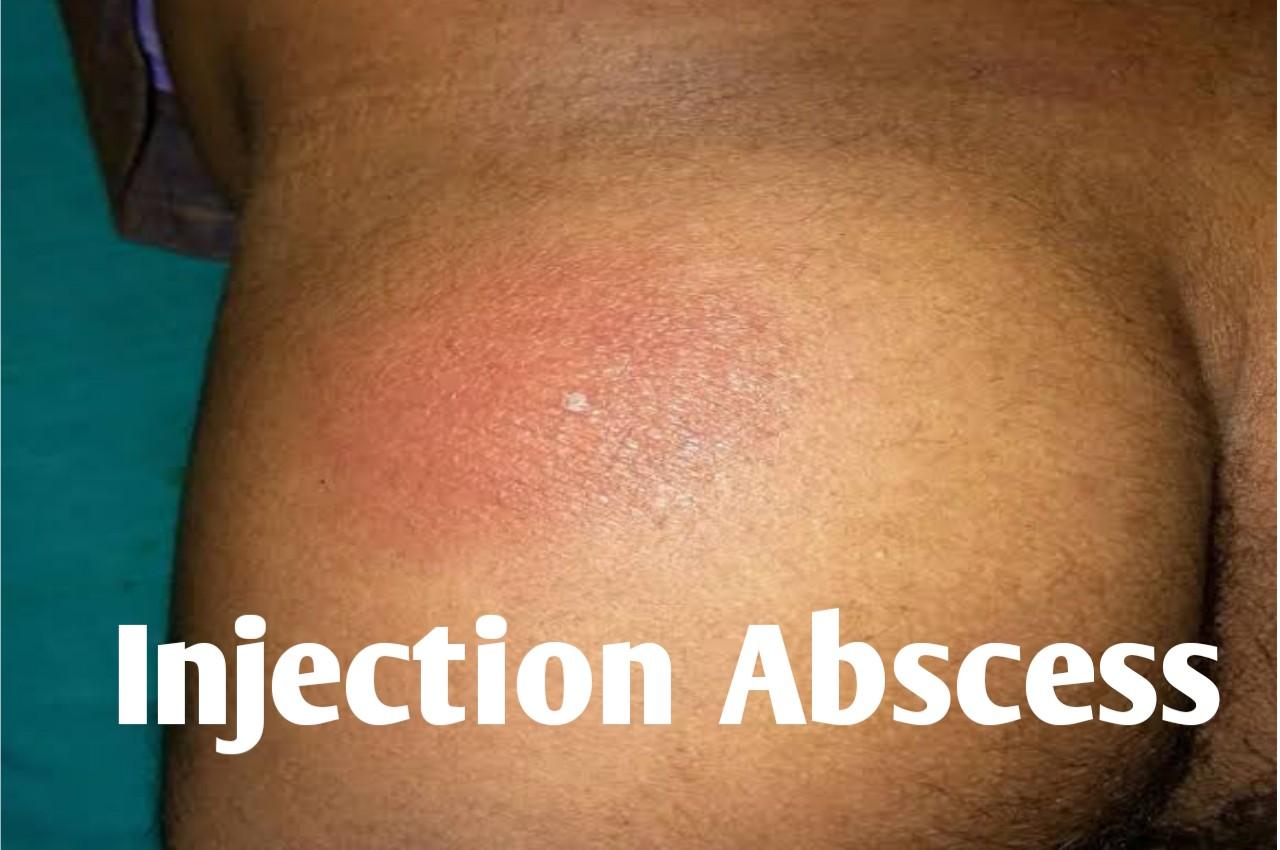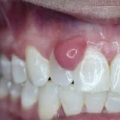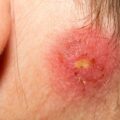An Injection abscess is a pus filled mass that occurs at the site where injection was administered. It occurs due to infection of the area. Intramuscular (IM) injections are routinely performed by nurses and ancillary staff, and consequently, many physicians are not familiar with the proper technique or the potential complications. When an area in the body becomes infected, the body’s immune system sends white blood cells to fight the infection. These cells collect and combine with the damaged tissue and germs, creating liquid called pus. This is among the primary causes of IM injection abscess.
It is very common in the gluteal region (buttocks). Rarely, the abscess breaks open on its own and releases the pus. In most cases it requires surgical intervention. The doctor cuts open the abscess to help in drainage of pus and relief from symptoms.
Symptoms of Injection Site Abscess
These symptoms occur following administration of an injection.
- a smooth swelling at the site of the injection.
- pain and tenderness in the affected area.
- warmth and redness in the affected area.
- a visible build-up of white or yellow pus under the skin in the affected area.
- a high temperature.
Treatment of Injection Site Abscess
Most times, it is quite easy to learn how to treat and manage and injection abscess at home. A small skin abscess may drain naturally, or simply shrink, dry up and disappear without any treatment. However, larger abscesses may need to be treated with antibiotics to clear the infection, and the pus may need to be drained. This will usually be done either by inserting a needle through your skin or by making a small incision in the skin over the abscess. In some cases, your doctor may prescribe antibiotics to help clear up the infection. This is especially the case when there is a high risk of complications due to immune status and other related issues.
Skin Boils
A boil is a skin infection that starts in a hair follicle or oil gland. At first, the skin turns red in the area of the infection, and a tender lump develops. After four to seven days, the lump starts turning white as pus collects under the skin. The most common places for boils to appear are on the face, neck, armpits, shoulders, and buttocks. When one forms on the eyelid, it is called a sty. If several boils appear in a group, this is a more serious type of infection called a carbuncle.
Causes of frequent boils on skin
Most people with recurrent boils develop them because they are carriers of Staphylococcus aureus bacteria (staph bacteria). If you have recurring boils, tell your doctor. Recurring boils may point to MRSA infection or an increase in other types of staph bacteria in the body. If you have several boils in the same place, you may be developing a carbuncle.
How to Get Rid of Skin Boils
Small boils can usually be treated on your own at home. Small boils that can be treated at home can take anywhere from a few days to three weeks to heal.
Here are a few tips for getting rid of a boil:
- Don’t squeeze or try to drain a boil yourself. This can lead to a spread of the infection or possibly cause a secondary infection of the boil.
- Place a warm, wet washcloth on the boil several times a day.
- Add some pressure when holding the washcloth in place without directly puncturing the boil.
- Once the boil ruptures naturally, keep it covered with a fresh, clean bandage or gauze. This will keep the infection from spreading to other places.
Wash your hands well after caring for your boil. This is also to prevent the infection from spreading.
How to treat large boils
If you have a large boil or a group of boils (carbunculosis), you should see your doctor for treatment. Only your doctor can drain a large boil or carbuncle safely. Also, sometimes a large boil becomes soft and won’t burst on its own. This is another issue your doctor can take care of by carefully draining it.
In some cases, your doctor may prescribe antibiotics to help clear up the infection. This is especially the case with face boils, since they run a higher risk of complications such as secondary infection or scarring.
How to Prevent Skin Abscess
Most skin abscesses are caused by bacteria getting into a minor wound, the root of a hair or a blocked oil or sweat gland. Ensuring that your skin is clean, healthy and largely free of bacteria can help reduce the risk of skin abscesses developing.
You can reduce the risk of bacteria spreading by:
- washing your hands regularly
- encouraging people in your family to wash their hands regularly
- using separate towels and not sharing baths
- waiting until your skin abscess is fully treated and healed before using any communal equipment, such as gym equipment, saunas or swimming pools
Don’t squeeze the pus out of the abscess yourself, because this can easily spread the bacteria to other areas of your skin. If you use tissues to wipe any pus away from your abscess, dispose of them straight away to avoid germs spreading. Wash your hands after you’ve disposed of the tissues.
Take care when shaving your face, legs, underarm areas or bikini area to avoid nicking your skin. Clean any wounds immediately and visit your doctor if you think there may be something trapped in your skin. Don’t share razors or toothbrushes.
It may also help to reduce your risk of skin abscesses by:
- maintaining a healthy, balanced diet
- losing weight if you’re overweight or obese
- stopping smoking
It’s difficult to prevent internal abscesses, as they’re often complications of other conditions.
Other types of abscess
There are many other types of abscess not fully covered here, including:
- an anorectal abscess – a build-up of pus in the rectum and anus
- a Bartholin’s abscess – a build-up of pus inside one of the Bartholin’s glands, which are found on each side of the opening of the vagina
- a brain abscess – a rare but potentially life-threatening build-up of pus inside the skull
- a dental abscess – a build-up of pus under a tooth or in the supporting gum and bone
- a quinsy (peritonsillar abscess) – a build-up of pus between one of your tonsils and the wall of your throat
- a pilonidal abscess – a build-up of pus in the skin of the cleft of the buttocks (where the buttocks separate)
- a spinal cord abscess – a build-up of pus around the spinal cord
- chills
SEE: Levid 500mg Tab: Uses, Side Effects, Price, Warning






